Table of Contents
You might know it as the tasty side to your favorite South American dish, perfectly crisp on the outside and fluffy in the middle. You may have even seen plantain chips at your local stores. But are there any health benefits, and do plantains have gluten?
Let’s take a deep dive into the evidence on the nutrition and health benefits of plantain and how you might use them at home.
What are plantains?
On the surface, plantains look like very large, thick bananas. Unlike bananas, they contain high levels of starchy carbohydrates, making them more nutritionally like a potato (1). Plantains are also a rich source of fiber, and several key vitamins and minerals, particularly Vitamin C, Vitamin B6, potassium, and magnesium. Plantains are a staple across many South American, African, and Asian countries (2).
The plantain plant grows like a large and leafy tree but is, in fact, a giant herb. The growing fruit known as ‘fingers’ grows in bunches of 10-20 called ‘hands’ (2). Plantain is native to the Philippines but is now grown in tropical and subtropical regions around the world, including parts of North America. Although plantains can be eaten raw, they are typically boiled or fried to bring out the best flavor and make them easier to digest (3).
Are plantains gluten-free?
Plantains are naturally gluten-free. As they are largely composed of starch, they also have a great texture for gluten-free flour. The high fiber and nutrient content in plantain make them a great addition to the diet for anyone who avoids gluten.
However, diagnosed coeliacs (people with an immune intolerance to gluten) should be careful to check before consuming a plantain dish when eating out, as there might be cross-contamination from oil or fryers.
Nutrition and health benefits you should know
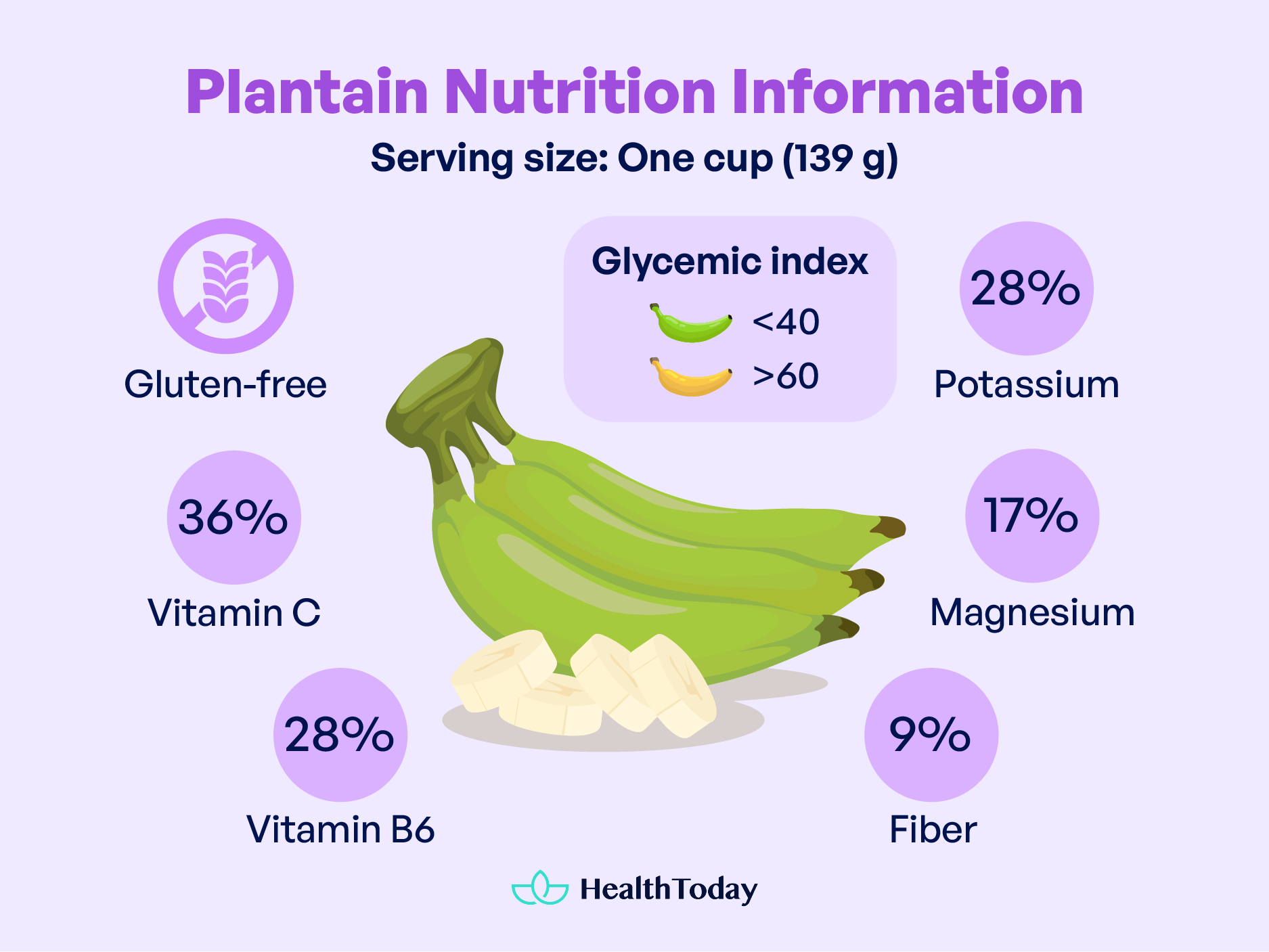
Nutrition facts
Plantains are a great source of fiber-rich carbohydrates and can help meet the nutrition guidelines for several vitamins and minerals (1). One cup (139 g) of ripe plantain contains:
- 36% of the recommended value of Vitamin C
- 28% of the recommended value of Vitamin B6
- 28% of the recommended value of Potassium
- 17% of the recommended value of Magnesium
- 9% of the recommended value of Fiber
Interestingly, several minerals are found in larger quantities within the plantain peel: Including potassium and phosphate (4).
Are plantains good for diabetes?
Unripe plantains have been shown to have a lower glycemic index (<40), regardless of preparation method, and are a great source of slow-releasing fiber which helps keep blood sugar levels stable (5, 6). This makes dishes that use unripe plantains a good choice for diabetics. It is important to note this is not the case for ripe plantains, which have a higher glycemic index (>60) (5).
Interestingly, in vitro studies on diabetic rats have demonstrated a blood-sugar-lowering effect when supplementing the diet with boiled, unripe plantain and reduced reactive oxygen species that cause inflammation (7, 8).
There is also some limited evidence from non-human studies for a protective effect against the complications of diabetes, such as liver and kidney damage (9).
Diabetics can confidently enjoy cooked unripe plantains. However, those taking insulin should consider it for carb counting: 1 cup of cooked green plantain contains approximately 40g of carbohydrates (10).
Other health benefits
In recent years, we have acknowledged the important role of dietary fiber in maintaining a healthy balance in the gut microbiome. This includes avoiding constipation by promoting regular bowel movements and allowing healthy gut bacteria populations to flourish by acting as a pre-biotic.
However, plantain fiber also appears to help prevent gut infections. Research led by scientists at the University of Liverpool has shown that fiber extracted from plantain can block infective and “food poisoning” gut bacteria, including E. coli and salmonella, from causing infections leading to diarrhea (11, 12). We continue to learn more benefits of consuming dietary fiber, including ones that extend beyond the gut to support other systems in the body.
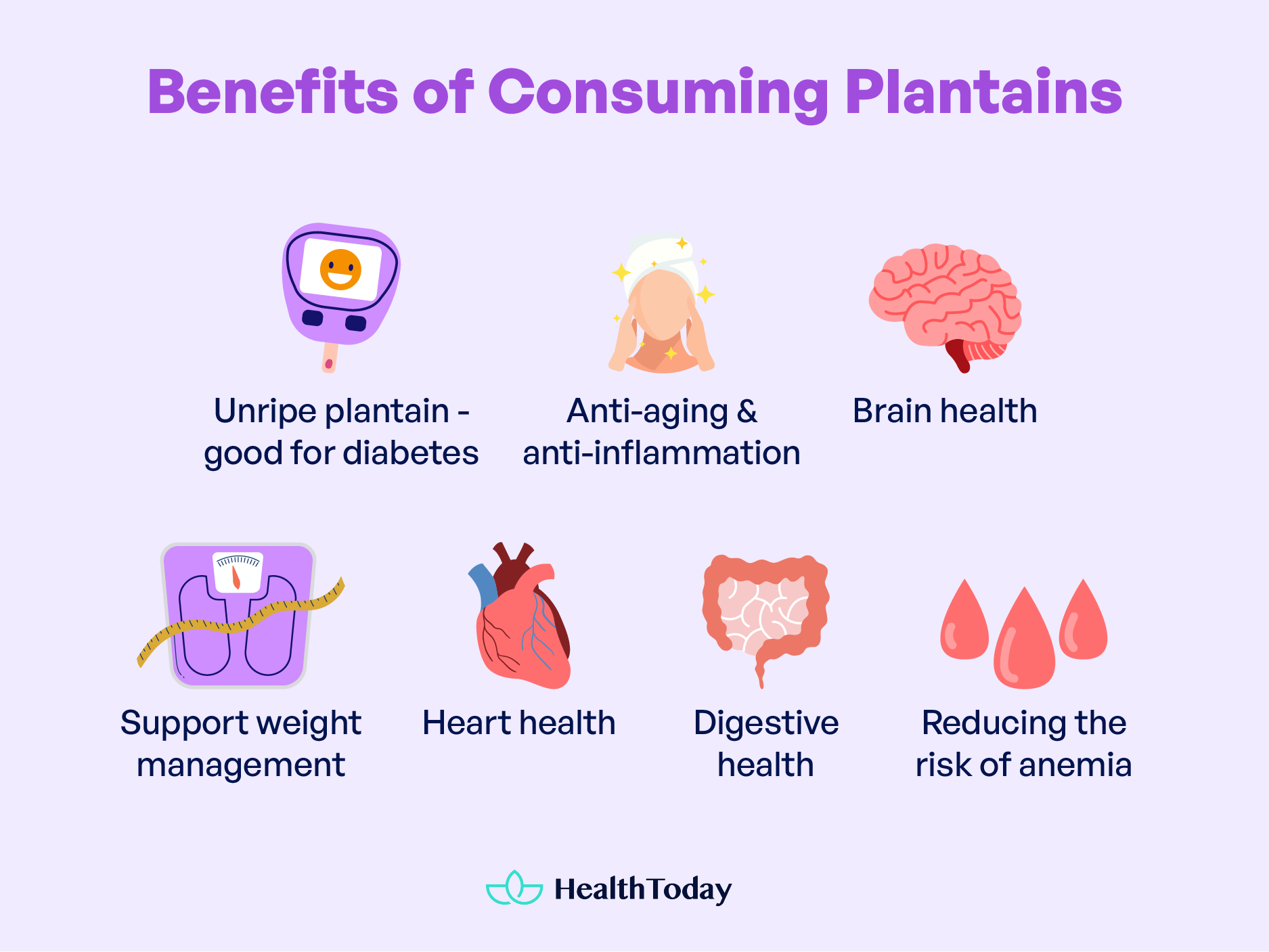
Anti-aging & anti-inflammatory
Plantains are also a great source of antioxidants such as Vitamin C and ferulic acid (also known as hydroxycinnamic acid) which help slow aging and the onset of chronic and infectious diseases that progress with inflammation (1, 13, 14, 15). Cancer, heart disease, and aging are some health conditions that antioxidants like Vitamin C can help protect against.
Brain health
Compared to other fruits, plantain and other banana varieties are fantastic sources of the brain-friendly chemicals serotonin and dopamine (in plantain peel) (16, 17, 18).
Eating foods high in Serotonin may have a calming effect and can help with weight management (19). Meanwhile, more research is needed to see if eating foods high in dopamine may have any impact on health (20).
Weight management
The fiber found in plantain also plays a role in weight management. By slowing down digestion and stabilizing blood sugar levels, the plantain fiber can also keep you feeling full for longer, which is important when trying to manage your weight, as a satiated appetite can prevent you from overeating and snacking behavior.
Heart health
Potassium is an important mineral in keeping blood pressure at safe levels, which helps maintain a healthy heart. Plantains are an excellent source of potassium, with one cup containing 28% of your recommended intake (1). At the same time, plantains are low in sodium which raises blood pressure, making them a good option as part of a diet that manages hypertension.
The soluble and insoluble fiber found in plantain can help reduce cholesterol levels, which helps improve the blood flow in the body.
Digestive health
As well as supporting bowel movements, the high fiber in plantain can help prevent constipation and other problems related to the gastrointestinal tract, such as hemorrhoids.
Reducing the risk of anemia
Anemia is typically caused by insufficient iron levels in the blood. Plantains are a source of some iron (<5% of Daily Recommended Intake per 1 cup of plantains), but even more importantly, they are a source of Vitamin C (20% of Daily Recommended Intake per 1 cup of plantains) which helps our bodies absorb iron more efficiently from the gut. This is great news for vegetarians, as gaining iron from plant-based sources is more challenging.
Plantains vs. banana: Key facts
Like bananas, plantains are a hybrid of two wild banana species but are physically larger and denser (2). Plantain is one of several cooking varieties in the banana (Musaceae) family, but only four are true plantain varieties. There are over 1,000 varieties of bananas, including sweet types and other cooking cultivars, but a single sweet banana, the Cavendish, dominates the global market (3).
Both plantain and bananas are important for food security and are widely available worldwide. However, plantains have long been a critical source of energy in the diet of many people in African, Asian, and South American countries, where they are a popular street food or staple in the home.
In comparison to bananas, plantains are higher in calories but are more nutritious, with higher levels of most vitamins and minerals. Plantains are a fantastic source of potassium and Vitamin C in particular. Yet, bananas are slightly better sources of phenolic compounds, another type of antioxidant (16).
While for the sweet bananas we tend to eat raw, plantains are usually boiled, fried, or baked, and used in savory dishes.
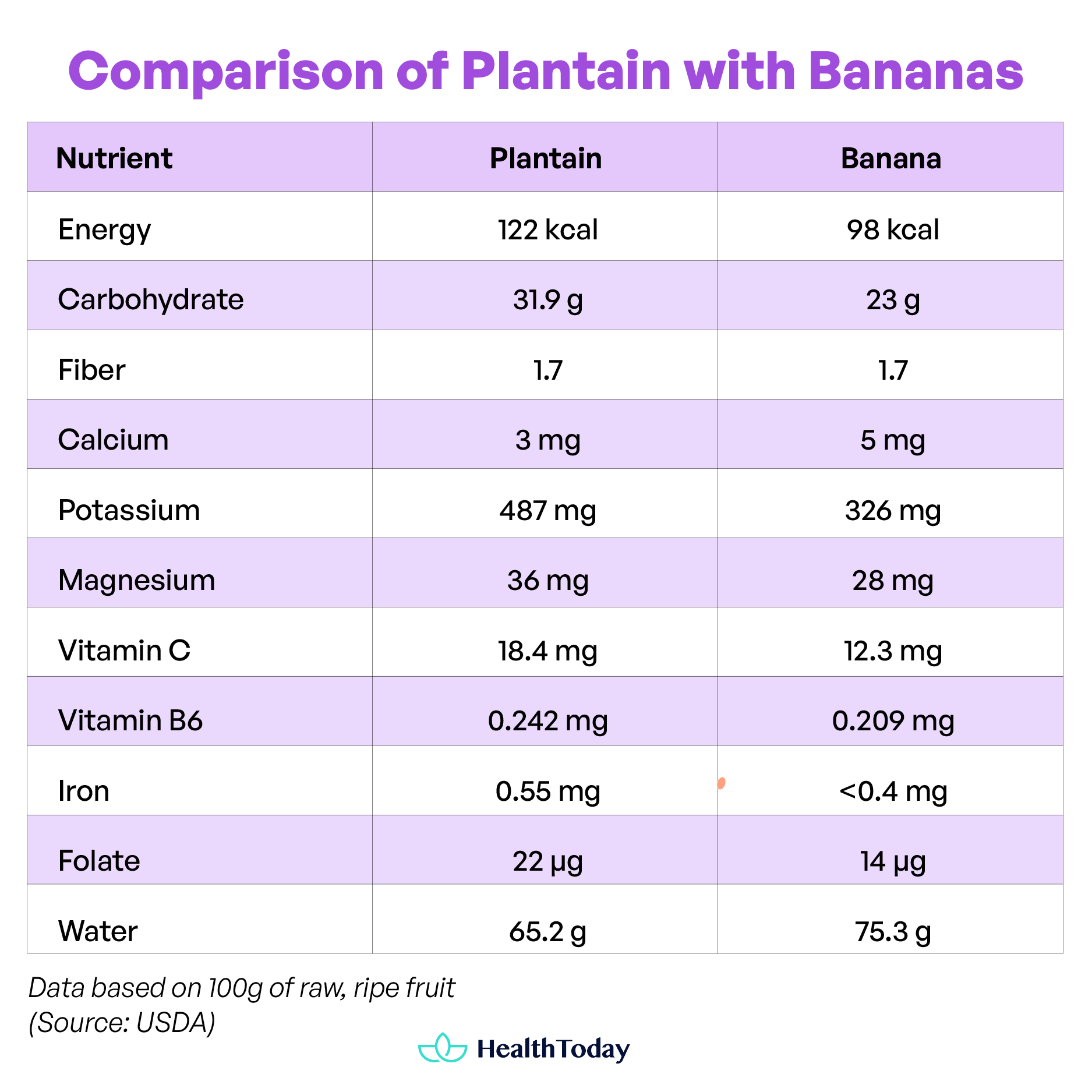
Green vs ripe plantains: is there a difference?
Green unripe plantains are lower in sugar with high levels of healthy fiber (6, 7)
However, ripe or yellow plantains are more abundant in all other nutrients, including antioxidants (1, 21).
Best ways to eat plantains
Plantains can be eaten cooked but are unpopular in their raw form, which has a tough and chalky texture. Instead, plantains are traditionally mashed or cut into rounds and fried, often in a two-stage process that helps bring out their sweetness.
However, the recommended method is to boil plantain, which retains and increases the antioxidant levels (15, 16). If you are willing to keep the peel, you will reap even greater benefits from the higher concentration of anti-aging and brain-boosting ingredients (13)
However, for those who want to manage their blood sugar levels, the unripe or green plantains are the most beneficial (6, 7). Due to its high starch content, plantain is a useful ingredient that can be used as flour for gluten-free and paleo-friendly baking (9).
Recipes Using Plantain
Plantains can be eaten raw, but cooking helps improve their texture and flavor. Since they are nutritionally starchy carbohydrates, they are a versatile food that can be eaten in various ways.
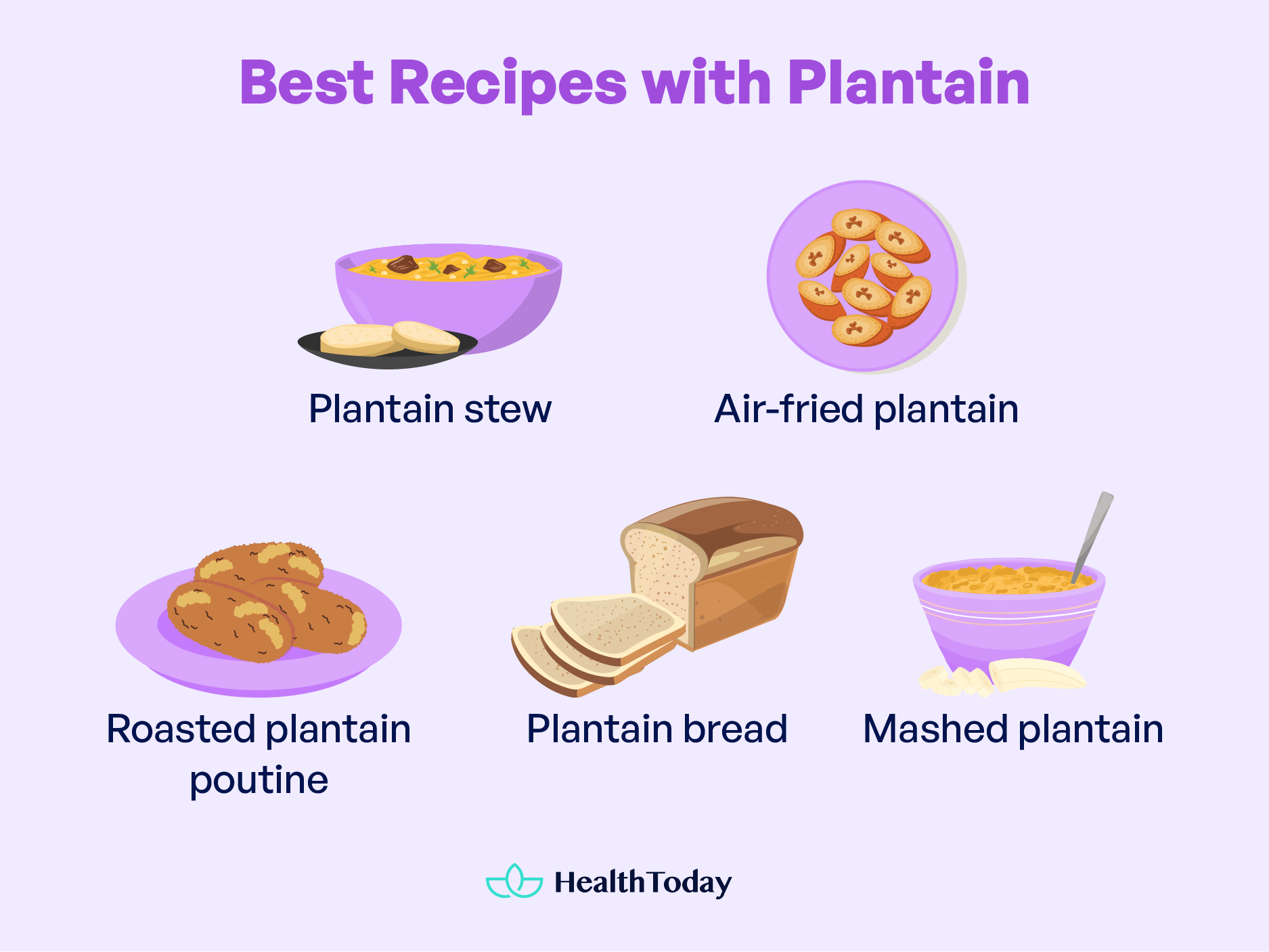
Plantain stew
The peel and flesh can be added to a vegetarian or meat-based stew for the maximum health impact. You can finely dice the peel – at the end of the cooking process, it will be undetectable.
Air-fried plantain
Air-frying plantains is a great way of making traditional Puerto Rican tostones without the added fat. You can cut the plantain in rounds or slice it into long rectangles to make plantain chips. Air-fried plantain is best enjoyed in a full Latin ensemble with meat or black beans and your favorite toppings such as salsa, cheese, and mashed avocado.
Roasted plantain poutine
The next time you have leftover cooked meat and stock, chop some plantain in the oven with a good dose of olive oil to roast and serve with the leftover stock, veg and meat on top as a healthier twist on a Canadian comfort food.
Plantain bread
For added health perks, you could use plantain flour to make bread. You could make it either sweet or savory, depending on whether you add any sugar or sweeteners, and enjoy it with your choice of sweet or savory spreads.
Mashed plantain
Like mashed potatoes, plantain can be boiled and mashed. Fried onions would make a delicious topping.
How many plantains should you eat per day?
As a starchy carbohydrate, the serving size for plantain is ~1 cup per person, which is the equivalent of ½ a plantain. It is generally best to vary your sources of carbohydrates for maximum gut health, so it may be best to have up to 1 whole plantain a day spread over two meals.
Are fried plantain chips gluten-free?
Since plantain does not contain gluten, plantain chips can be gluten-free. However, there is still a risk of gluten-containing additives in packaged chips or cross-contamination from oil or fryers in kitchens. It is always best to check the label for ingredients containing gluten, or in the case of fresh plantain chips, to ask whoever has prepared the meal.
Are plantains inflammatory?
Plantains are not considered an inflammatory food. Instead, they have high anti-inflammatory properties due to components including Vitamin C and ferulic acid. However, people often come across deep-fried plantain, which should be enjoyed in moderation.
Do plantains cause gas and bloating?
Some people who are not used to eating high-fiber foods might experience some stomach discomfort from consuming plantain. If you are worried about experiencing gas or bloating, it is best to take a gradual approach when introducing plantain into your diet to allow your body to grow used to it.
Do plantains trigger IBS?
Individuals suffering from IBS (irritable bowel syndrome) or sensitive stomachs should be cautious when trying new foods. However, plantain is considered a low FODMAP food, meaning it is less likely to promote rapid fermentation in the gut, which causes discomfort for people with IBS (22, 23). Due to its pathogen-inhibiting effect in the gut, which is associated with gut disorders like Crohn’s disease and IBS, it has been suggested that plantain could have therapeutic benefits for people living with irritable bowel syndrome (22, 24).
Which is healthier: boiled or fried plantain?
The healthiest way to serve plantain is boiled, as the nutrients are retained without adding fats from oil. Air-frying is another good alternative.
Summary
Plantains are an incredible source of antioxidants, vitamins, and minerals to help you maintain good health. They make a great gluten-free option, and dishes using unripe plantain can be enjoyed as a part of a balanced diet for diabetes. Whatever your motivation, plantain offers a delicious and nutritious food that everyone can enjoy. Now the next time someone asks, ‘Are plantains gluten-free?’, you can be confident you know the answer.





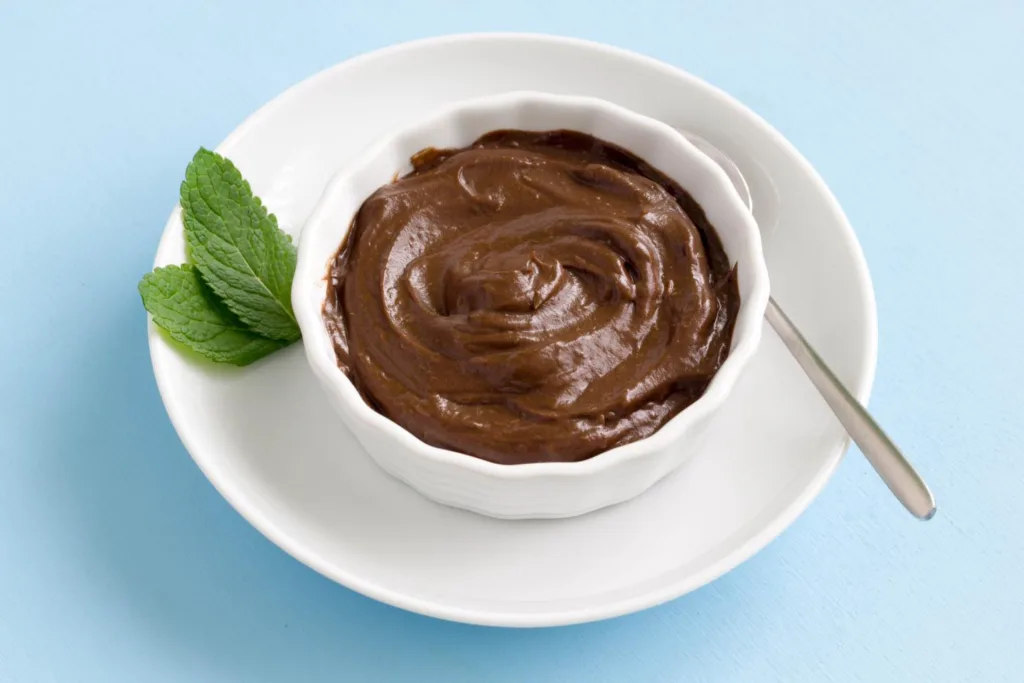
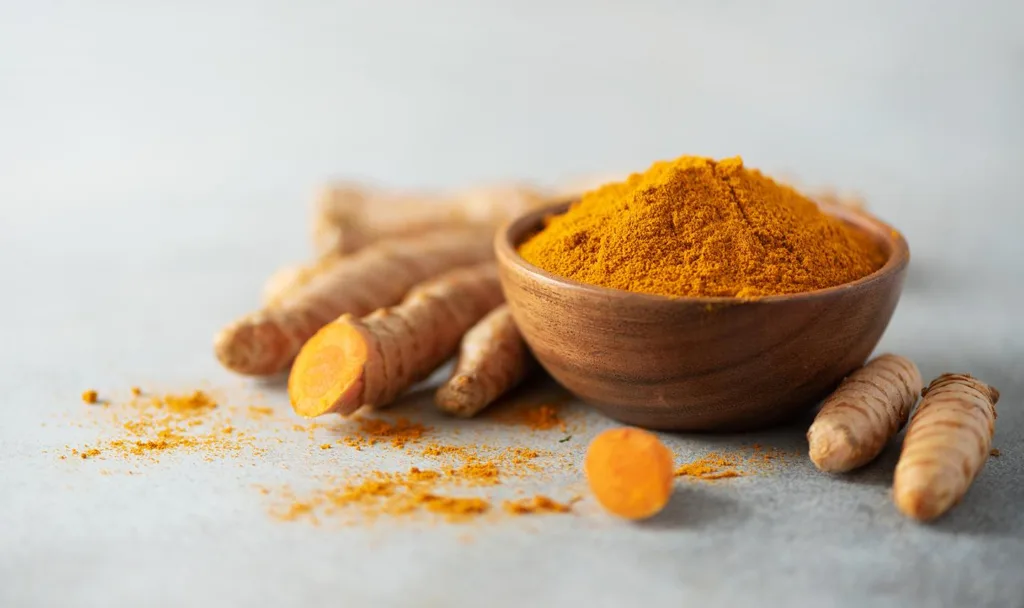








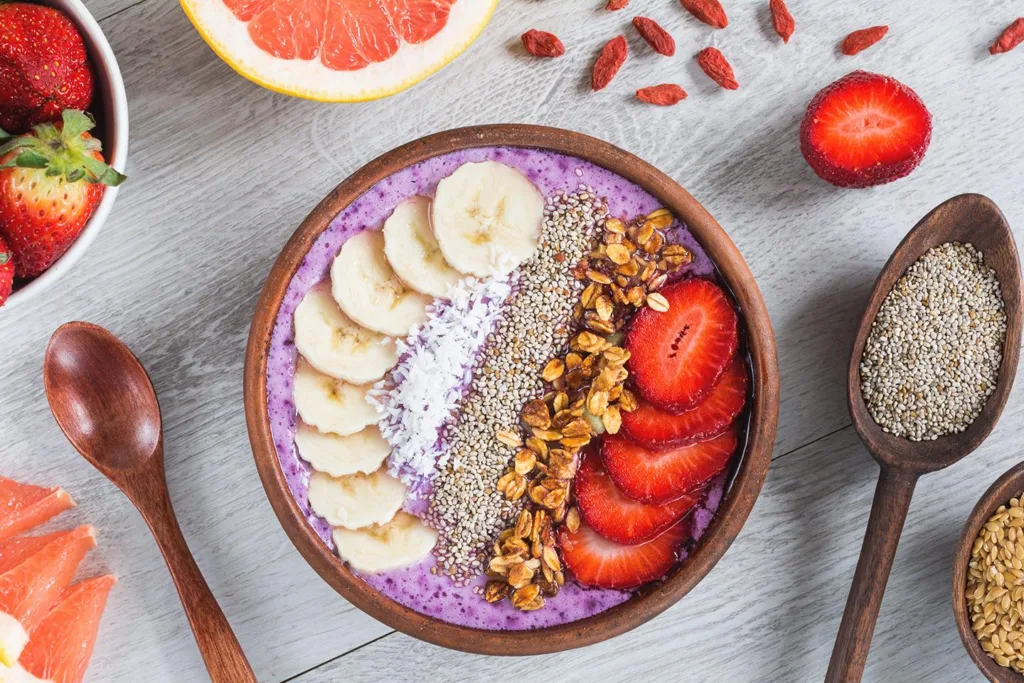

Comments
0